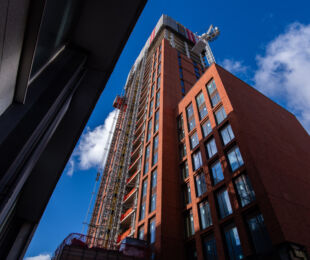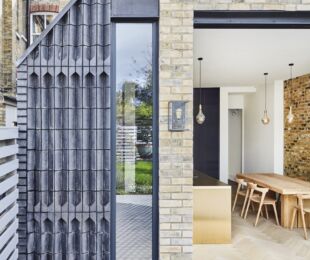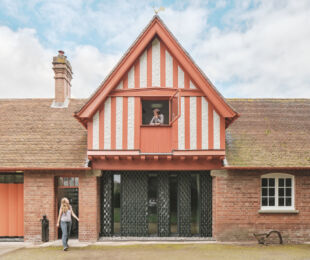KARAKUSEVIC OF KARAKUSEVIC CARSON ARCHITECTS REFLECTS ON BRICK'S QUALITIES

There’s no getting away from the fact that London is built mostly of brick. From row upon row of Victorian terraces to comfortable mansion blocks and awe-inspiring civic buildings, brick is the London vernacular. People like brick. They like its familiarity, size, shape and touch. Most importantly, people like the way brick makes them feel – safe, secure and contained – which is vital when you’re building someone’s home. Brick is also wonderfully versatile. Not only can it provide a sense of presence and place, but through careful detailing, it can produce tremendous variety and individuality. Brick’s dual capability of robustness and intimacy is crucial to the housing that we build. Domestic architecture has to last. Housing, especially council-led housing is about creating neighbourhoods that will still exist in 200 years time. Well built, high-quality brick buildings that are both economical and long-lasting can help us achieve this.
A pair of recent London-based projects are good examples of how we use brick. The Bacton Estate in Camden is a community-led regeneration scheme that focuses on the transformation of a troubled residential area into an exemplary new community for local residents. Camden Council views it as a model for new estates in the borough. Brick has been integral in connecting the scheme with the wider Gospel Oak and Kentish Town areas, much of which comprise terraced brick housing. The masonry detailing includes projecting brickwork and a range of coursing types. The former frame generous openings and help to give the buildings a sense of rhythm and poise. In terms of landscaping, small brick-format pavers provide texture, while fin bar railings and gates with brickwork upstands result in defensible spaces that enhance the public realm.
Material samples were presented to residents as part of the specification process, the aim being to source suitable, high-quality, robust materials that would be able to withstand residential wear and tear and climate. The samples helped residents to visualise the proposals, and persuade them that modern architecture could be liveable and stand the test of time. Material consultation continued past the planning stage and resulted in the selection of a varied palette of five types of high-quality brickwork.
The redevelopment of Kings Crescent Estate in Stoke Newington, Hackney, is intended to reinvigorate a community that had become isolated from its surroundings. Our approach has been to reintegrate the estate with the surrounding townscape of Victorian streets and public spaces. This has been achieved by renovating retained older buildings (in collaboration with architect HHbR), as well as creating new buildings and landscaping. High-quality brick combined with carefully considered detailing ensures that the new buildings sit comfortably in their varied context and will age gracefully. The architecture is designed to bridge the gap between strong, confident buildings fit for higher-density living, and fine-grain detailing, with attention paid to the proportions of the facades and internal spaces.
We pride ourselves on our design-led but pragmatic approach to each project, and have pioneered the use of innovative building materials, such as cross-laminated timber. But brick remains trusted, versatile and long-lasting; like an old friend you’ve grown up with and know you can rely on.
Paul Karakusevic is principal of Karakusevic Carson Architects.






